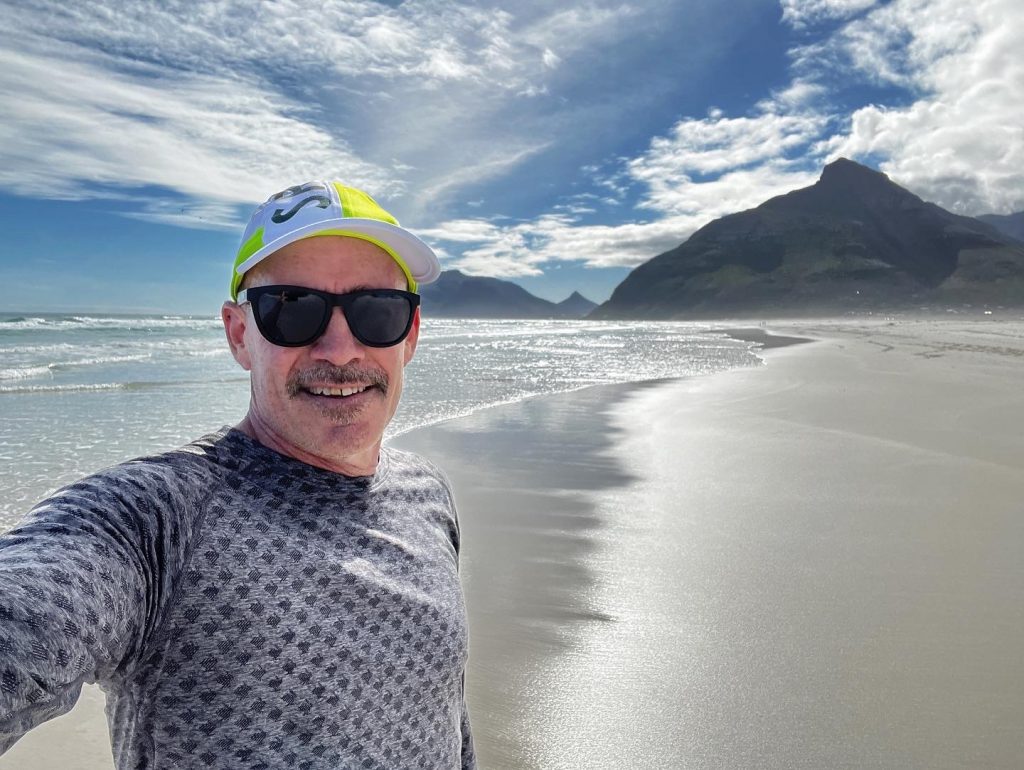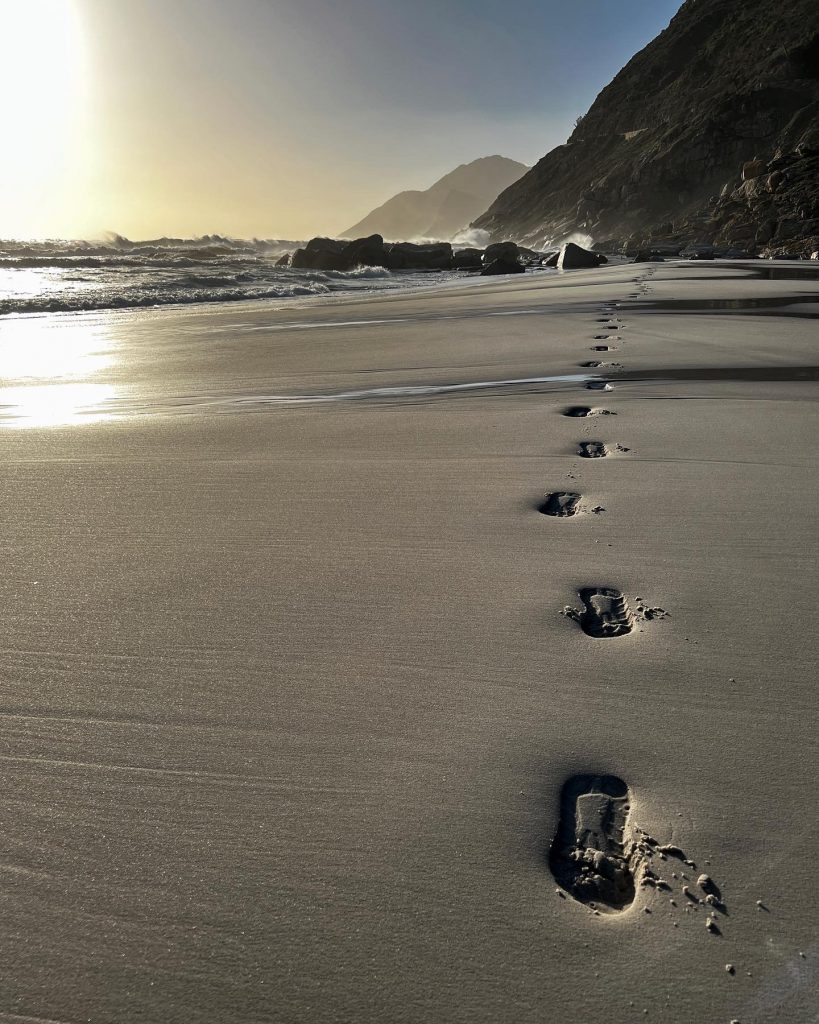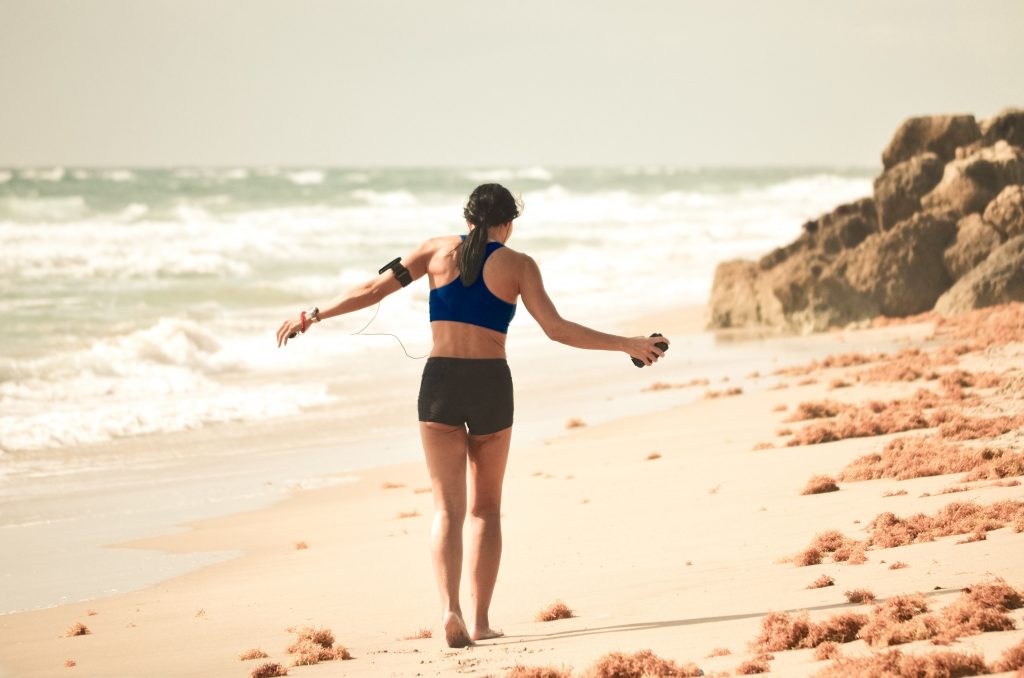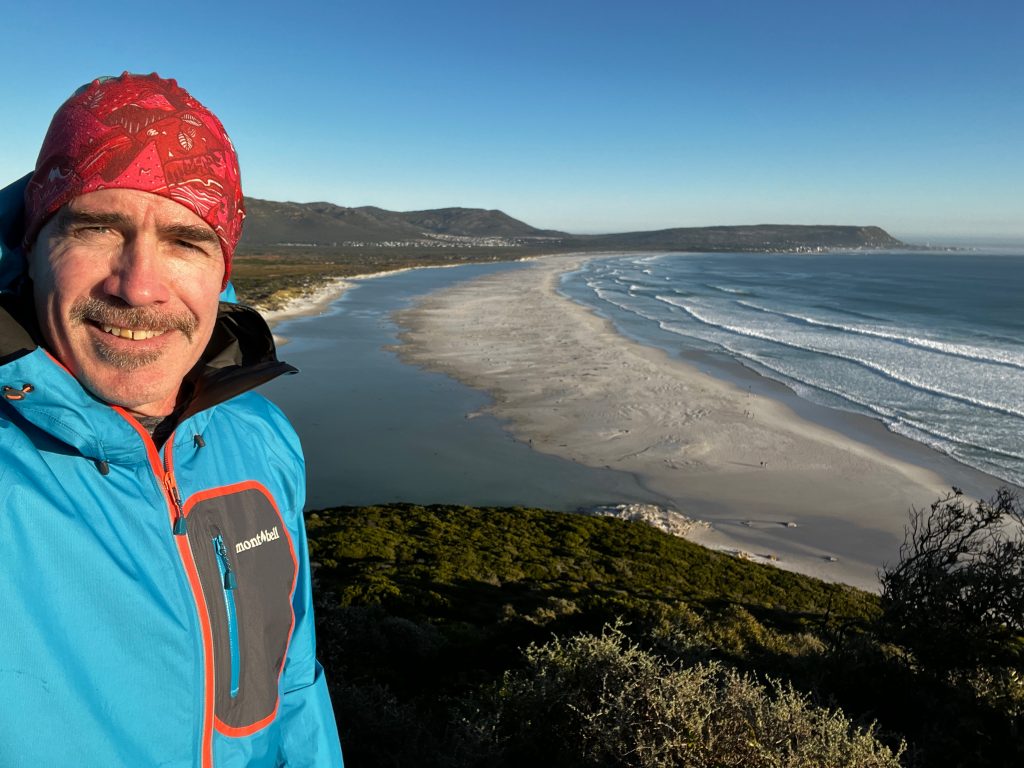A couple of years ago, I struggled with a hamstring injury that would just not heal. The problem was caused by my failure to do enough (or any) physiotherapy following an Achilles tendon surgery, after which I lost significant muscle mass in my right calf. I was able to run again fairly soon, but incurred a series of injuries on my "strong" side, obviously as a result of overcompensating. I could see this in the uneven wear patterns on the soles of my running shoes.
Unfortunately, I'm pretty terrible at following through with non-running strength and flexibility exercises, even when they are strongly recommended by my physiotherapist. However, last year I had an experience that not only solved my hamstring problem, but also made me think about running injuries in general.

What was my experience? I rented a house for a couple of months in a seaside community south of Cape Town, where there is a four-kilometre-long beach on which I was able to run every day. After two months of running on sand (hard sand at low tide, soft sand at high tide), my hamstring had completely healed and my entire lower body musculoskeletal system felt much stronger.
Seems obvious: soft surfaces mean fewer injuries, right?
Well, although it certainly felt that way to me, the evidence is far from clear.
Over 10 years ago, American journalist Christopher McDougall published a seminal book titled "Born to Run: A Hidden Tribe, Superathletes, and the Greatest Race the World Has Never Seen", launching a barefoot/minimalist running boom that is still going strong. In researching the book, McDougall spent time with the native Mexican Tarahumara tribe, noting that its runners traveled long distances on foot wearing only thin sandals and avoided injury. McDougall became an advocate for barefoot or minimalist running, positing publicly that modern cushioned running shoes are a major cause of running injury.
Interesting if true, as they say.
One thing that differentiates you and me from Tarahumara runners, very probably, is that you and I run quite a lot on hard surfaces – concrete and asphalt – and the Tarahumara run on dirt. And as mentioned above, soft surfaces mean fewer injuries, right?
Unfortunately, for those looking for a silver bullet with which they can eliminate injury downtime from their training calendar, there is not much evidence to support the theory that soft surfaces mean fewer injuries.

There are plenty of research showing how hard and soft surfaces affect running form, but not so much about actual injuries.
What seems clear from the research (quite a lot of it funded by running shoe companies) is that the human body is designed to adapt to different conditions; our strides can and do change depending on the density of the surface we're running on. On my beach in South Africa, for example, it was obvious to me that running on sand shortened my stride (push-off is much tougher on sand), but it was equally obvious that my Achilles tendon was being stretched (though not necessarily stressed) more than it would be on a harder surface like a road.
The same is true for trail running. If you are a regular trail runner, you have heard a million road runners explain to you that they don't run trails "because I've got weak ankles." Well, yes, maybe, but if you start running on trails, the highly variable foot landing and takeoff positions will build strength in your ankles and feet, and eventually you won't have weak ankles!
Biomechanist Dr. Benno Nigg has noted that despite a century of development in athletic shoe manufacturing, injury rates among runners have not decreased significantly. In an interview last year with Podiatry Management (yes I know, I have an eclectic reading list!), Dr. Nigg said,
“When I was a young biomechanist, I thought that impact and pronation were the two factors for the development of injuries. I wanted to go out and prove that this is true. When we first researched on impact, it came to the point where I had to say that I did not find the result I expected. If you look at everything that has been published in the literature about impact forces and injuries, the sum seems to be that impact forces are not the reason for injuries. From a purely statistical point of view there is no evidence that impact forces during running are the reason for injuries.”

What is supported by research is that different surfaces (and speeds) cause runners to run differently. The reason seems to be that our bodies seek out a running form that is as comfortable as possible.
Running faster on harder surfaces, we tend to run more up on our toes (i.e. more on the midfoot) than we do when we run slowly on softer surfaces, on which we tend to increase our heel striking.
Is this “good”? Or “bad”?
Neither, suggests Dr. Nigg, who says that the important aspects of performance and/or injuries are more related to individual running style. He says,
“From an energy point of view, we do well when we are in a preferred running situation. Or maybe the other way around, we feel comfortable when the energy situation is good. One should run in any way that feels comfortable, whether this is with shoes or barefoot, and probably one should not run in a situation that is not comfortable.”

There is also plenty of research demonstrating that increased chance of injury is associated with – surprise, surprise – higher weekly mileage and a history of previous running injuries (i.e. how bulletproof your body is, or isn’t).
I know from experience that my body isn’t “bulletproof”. Some of this is probably due to my running style; some of it is probably due to DNA. I’m not sure. It seems clear that there is no silver bullet that can prevent injuries. What works for Christopher McDougall may not work for me, and vice versa. What works for me may not work for you, and vice versa.
And so, perhaps it wasn’t the soft sand in Cape Town that healed my hamstring. Perhaps it was that I had no specific training or racing goals, and most days simply went out to enjoy a 10km or 20km run in a beautiful setting. I felt “comfortable”, in Dr. Nigg’s words.
Or perhaps it was the soft sand!






Comment (0)